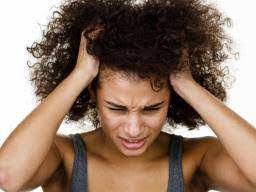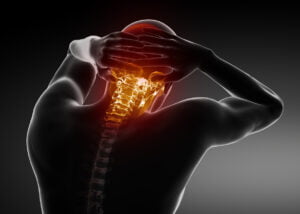Experiencing pain in the back of the head can be quite distressing, and it’s a common issue faced by many individuals. Whether it’s a dull ache or a sharp discomfort, understanding the potential causes and finding effective solutions is crucial. In this article, we’ll explore the various factors that contribute to head pain and how to manage and alleviate it.
Contents
Common Causes of Pain in the Back of the Head

Pain in the back of the head can be caused by various factors, ranging from benign to more serious conditions. Here are some common causes:
- Tension headaches: Tension headaches are the most common type of headache and often cause a dull, aching pain at the back of the head or the base of the skull. They are usually caused by muscle tension and stress.
- Cervicogenic headaches: These headaches are caused by issues in the neck or upper spine. Problems such as muscle strains, nerve compression, or arthritis in the cervical spine can lead to pain that radiates to the back of the head.
- Migraines: Migraines can cause pain on one or both sides of the head and may also affect the back of the head. They are often accompanied by other symptoms like sensitivity to light and sound, nausea, and visual disturbances.
- Occipital neuralgia: This condition involves irritation or inflammation of the occipital nerves, which run from the top of the spinal cord to the scalp. It can lead to sharp, shooting pain at the back of the head.
- Cervical spondylosis: This is a degenerative condition of the cervical spine that commonly occurs with age. It can cause neck pain and stiffness that may radiate to the back of the head.
- Posture-related issues: Poor posture, especially from prolonged sitting or computer use, can strain the muscles at the back of the head and lead to pain.
Recognizing the Symptoms
Recognizing the symptoms associated with pain in the back of the head can help in understanding the potential underlying cause. Here are some common symptoms you may experience:
- Headache: Pain at the back of the head is the primary symptom. The quality and intensity of the pain may vary depending on the underlying cause.
- Location and Radiation: The pain may be localized to the back of the head or extend to other areas like the neck, temples, forehead, or behind the eyes.
- Pain Type: The pain can range from dull and aching (tension headaches) to sharp and shooting (occipital neuralgia) or throbbing (migraines).
- Duration and Frequency: Note how long the pain lasts and how often it occurs. Some headaches may be short-lived, while others can last for hours or even days.
- Associated Symptoms: Pay attention to any other symptoms that accompany the headache, such as sensitivity to light and sound, nausea, vomiting, dizziness, visual disturbances, or vision changes.
- Triggers: Try to identify any specific triggers that might bring on the headache, such as stress, certain foods, lack of sleep, or physical activities.
- Neck and Shoulder Symptoms: If the pain is related to cervicogenic headaches or cervical spine issues, you might experience neck pain, stiffness, or limited range of motion in the neck.
Lifestyle Factors and Triggers

Lifestyle factors and triggers can play a significant role in causing or exacerbating pain in the back of the head. Identifying and managing these factors can help reduce the frequency and intensity of headaches. Here are some common lifestyle factors and triggers to consider:
- Stress: Emotional and physical stress can lead to muscle tension, which may result in tension headaches or exacerbate other types of headaches.
- Poor Posture: Prolonged sitting, especially with improper posture, can strain the muscles of the neck and head, leading to headaches.
- Lack of Sleep: Insufficient or poor-quality sleep can increase the likelihood of experiencing headaches.
- Dehydration: Not drinking enough water can lead to dehydration, which is a known trigger for headaches.
- Caffeine: Consuming too much caffeine or suddenly stopping regular caffeine intake can trigger withdrawal headaches.
When to Seek Medical Attention
If you experience pain in the back of the head or headaches, it’s essential to pay attention to the symptoms and seek medical attention when certain warning signs or red flags are present. Here are situations when you should promptly seek medical attention:
- Sudden and Severe Headache: If you experience a sudden and severe headache, especially if it’s different from your usual headache patterns, it could be a sign of a serious underlying condition and requires immediate evaluation.
- Worst Headache of Your Life: If you describe your headache as the worst you’ve ever experienced, it may be a sign of a potentially life-threatening condition, and you should seek medical attention immediately.
- Headache After Head Injury: If you’ve had a recent head injury, and you experience a headache that worsens or doesn’t improve over time, it’s crucial to seek medical evaluation to rule out serious complications like a concussion or bleeding inside the skull.
- Neurological Symptoms: Seek immediate medical attention if your headache is accompanied by neurological symptoms such as difficulty speaking, weakness or numbness in the arms or legs, confusion, loss of consciousness, or vision changes.
- Fever and Stiff Neck: If you have a headache along with a fever and a stiff neck, it could indicate meningitis, a serious infection that requires urgent medical attention.
Managing Pain at Home
Managing pain in the back of the head at home involves a combination of self-care measures and lifestyle adjustments. Here are some strategies to help alleviate headaches and promote overall well-being:
- Rest: Get enough rest and practice relaxation techniques like deep breathing, meditation, or yoga to reduce stress and tension.
- Apply Heat or Cold: Applying a warm compress or taking a warm shower can help relax tense muscles. Alternatively, placing a cold pack wrapped in a cloth on the back of your head may help numb the area and reduce inflammation.
- Maintain Good Posture: Pay attention to your posture, especially when sitting or using digital devices. Use ergonomic chairs and ensure the top of your computer screen is at eye level to reduce strain on the neck and head.
- Stay Hydrated: Drink plenty of water throughout the day to prevent dehydration, which can be a headache trigger for some individuals.
- Manage Stress: Find healthy ways to manage stress, such as engaging in hobbies, spending time in nature, or talking to friends and family.
- Limit Screen Time: Reduce the amount of time spent on computers, smartphones, and other digital devices. Take regular breaks to rest your eyes and stretch your neck muscles.
Medical Treatments and Therapies

Medical treatments and therapies for pain in the back of the head and headaches depend on the underlying cause and the severity of the condition. Here are some common medical interventions that healthcare professionals may consider:
- Over-the-Counter (OTC) Pain Medications: Non-prescription pain relievers such as acetaminophen, ibuprofen, or naproxen may be recommended for mild to moderate headaches.
- Prescription Medications: For more severe or recurrent headaches, a healthcare provider may prescribe specific medications, including triptans (for migraines), muscle relaxants, or other pain relievers.
- Preventive Medications: In cases of frequent or chronic headaches, preventive medications may be prescribed to reduce the frequency and severity of headaches. These medications are usually taken regularly even when you don’t have a headache.
- Corticosteroids: In certain situations, a short course of corticosteroids may be prescribed to reduce inflammation and alleviate headaches.
- Botox Injections: Botulinum toxin injections (Botox) are effective in preventing chronic migraines in some individuals.
- Physical Therapy: Physical therapy can help address neck and shoulder issues that may be contributing to headaches. Furthermore, therapists use exercises, stretches, and manual techniques to improve posture and reduce muscle tension.
Understanding the Connection to Migraines
Migraines are a specific type of headache disorder that often involves recurrent and severe headaches, typically affecting one side of the head. They can be accompanied by other symptoms like nausea, vomiting, sensitivity to light (photophobia), and sensitivity to sound (phonophobia).
While the exact cause of migraines is not fully understood, they are believed to involve a combination of genetic, environmental, and neurological factors.
The connection between pain in the back of the head and migraines can vary depending on the individual and the specific migraine subtype.
When Headaches Affect Work and Productivity
Headaches that affect work and productivity can be a significant concern for individuals and their employers. Headaches can vary in intensity and duration, and when they become frequent or severe, they can have a considerable impact on a person’s ability to perform their job effectively. Here are some ways headaches can affect work and productivity:
- Decreased Concentration: Headaches can make it difficult to concentrate on tasks, leading to reduced focus and productivity at work.
- Impaired Decision-Making: Furthermore, severe headaches may impair cognitive function, making it challenging to make sound decisions or solve problems efficiently.
- Reduced Work Speed: Pain and discomfort can slow down the work pace. Furthermore, it is more time-consuming to complete tasks.
- Absenteeism: Frequent headaches may lead to taking sick days or time off work, resulting in increased absenteeism.
- Presenteeism: Even if an individual continues to work while experiencing headaches, their productivity may be reduced due to pain and discomfort.
Conclusion
Pain in the back of the head is a prevalent issue with various possible causes, but with the right approach, it can be effectively managed. By recognizing the symptoms, identifying triggers, and adopting healthy habits, individuals can experience relief and improved quality of life. Remember that seeking medical attention when necessary is crucial, and with the right combination of treatments, headaches can be alleviated or even prevented.
If you’re experiencing Back pain, physical therapy for back pain at PhysioMantra can help: Book an online physical therapy session.



